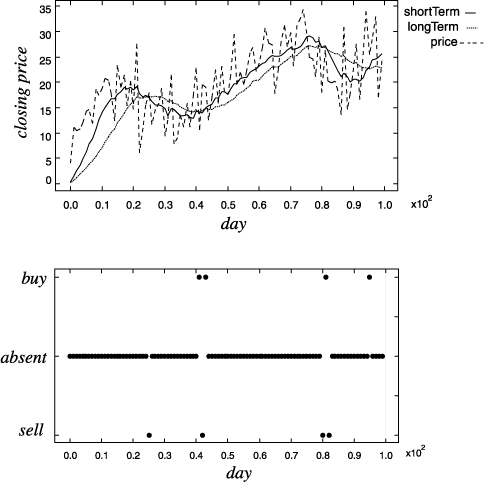Mixed Systems
Mixed systems combine time-based signals with event sequences where time-based and event-based systems interact as peers.
For example, the classic moving average cross-over method, popular on Wall Street, tells when to buy and sell stocks by comparing short-term and long-term trends. A short-term moving average might detect short-term trends, while a long-term moving average might detect long term trends. This method compares them, and if the short-term trend is more sharply upward than the long term trend, a buy signal is generated. If the short term trend is more sharply downward than the long term trend, a sell signal is generated. A system implementing this is shown below:

The input is a discrete-time signal
price: Integers → Reals
The input to the state machine is a tuple of discrete-time signals
(x, y) ∈ [Integers → Reals] × [Integers → Reals]
The output is an event sequence
action: Integers → {buy, sell, absent}
Notice that the guards on the transitions represent rather large sets, since the input alphabet is very large. A typical execution of this system is shown below:


 Up to Topics
Up to Topics Previous
Previous Next
Next